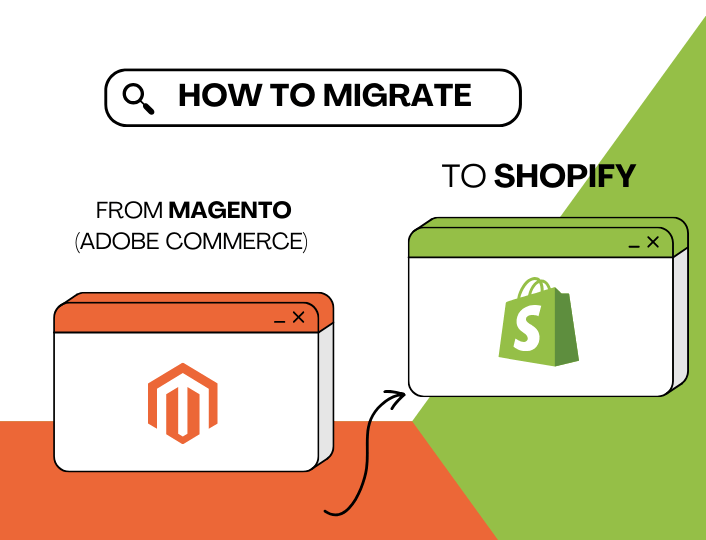As digital marketing continues to grow, Shopify remains one of the frontrunners for e-commerce platforms, empowering entrepreneurs and established businesses alike to establish their online presence.
With its user-friendly design and comprehensive functionality, Shopify streamlines the process of opening and operating an online store, catering to a variety of products and services.
However, considering the vast nature of e-commerce, reaching your target audience and effectively converting them into loyal customers can be daunting.
In this article, we’ll show you how to target your ideal customers on Shopify and develop effective strategies to establish meaningful connections with your target audience.
Understanding your target audience
Understanding your target audience is a fundamental aspect of creating effective marketing strategies and building a successful business.
To connect with and meet the needs of your customers, you must have a deep understanding of who they are, what they value, and how they behave. You can achieve this by doing the following;
1. Define Your Target Audience
Start by gathering demographic information such as age, gender, location, income level, and occupation. This will help you have a basic understanding of your target audience.
You can take it a step further by exploring their interests, hobbies, values, and lifestyle choices to have a more holistic view of who they are.
2. Create Detailed Customer Personas
Personas are fictional characters representing different segments of your audience. You make it up by assigning details that match people in real life, including names, backgrounds, motivations, goals, challenges, interests, etc.
Customer personas enable you to tailor your products and services to meet the specific needs and preferences of your audience. It also enables you to prioritize product features or service offerings based on their preferences.
If your audience is diverse, consider creating multiple customer personas to represent different segments within your target audience. Doing so will help you allocate your advertising budget more efficiently.
It also enables you to craft marketing messages and ads that resonate with the unique characteristics of each persona. Focusing on the segments that are most valuable to your business, helps you maximize the return on investment for your marketing efforts.
3. Utilize Social Media Listening
Social media listening involves utilizing social media platforms to listen to conversations within your target audience. It gives an avenue to pay attention to what they are saying about your industry, products, and competitors.
You can leverage the opportunity it provides to actively engage with your audience on social media. Respond to comments on your post on a post where your brand was mentioned, ask questions, and participate in discussions. This helps build a deeper connection and understanding.
For example, the image below shows Premier Cool Nigeria responding to a diss post on X (Twitter).


4. Pay Attention to Customer Feedback and Reviews
You can learn better about your customers from reviews and customer feedback. Encourage customers to provide feedback through surveys and feedback forms.
This can offer valuable insights into their experiences with your products or services and is a great way to identify what works and what needs changing.
Read product reviews on your website or check out review platforms to know what customers are saying about your products and services. Most importantly, address negative feedback constructively.
How to Find the Right Marketing Strategies
Now that you understand who your audience is and where their interests lie, finding your target audience and getting them to take the desired action will depend largely on your marketing strategy.
At this point, you need to develop the right marketing approach to attract the right audience. Consider taking the following steps:
1. Set Clear Business Objectives
Clearly define your business objectives. What are you looking to achieve? Whether it’s to increase brand awareness, drive sales, or launch a new product, your marketing strategies should directly align with these goals.
To get better results, break down long-term objectives into measurable, short-term goals. Doing this makes it easier to track your progress and adjust strategies when necessary. You can also take a cue from your competitors and tweak your objectives accordingly.
2. Understand Your Unique Value Proposition
Before diving into crafting a marketing strategy, defining your Unique Value Proposition (UVP) is non-negotiable. Your UVP sets your product or service apart from the competition.
It is the MVP in business and marketing. And without it, your business will likely struggle to stand out, especially if you are in a saturated market. Outlining your UVP will guide how you position your brand in the market.
Align your marketing strategies to highlight and communicate your UVP effectively to your target audience.
3. Consider a Multi-Channel Approach
Explore a mix of marketing channels. Depending solely on one channel can limit your reach. There are a ton of marketing channels you can employ to reach your Shopify target audience. These channels are classified into two groups which are digital marketing (social media, email, SEO, PPC) and traditional methods (print, events, radio).
Find out where your audience is most active and tailor your strategy accordingly. For example, if your audience is highly engaged on Instagram, invest more in visual content and influencer partnerships.
If you would like to reach your audience on YouTube, watch this YouTube marketing guide.
4. Leverage Data and Analytics
Study the performance of your previous campaigns and use the insights to inform your next marketing decisions. Implement analytics tools to track key performance indicators (KPIs) such as website traffic, conversion rates, and customer engagement.
Google and Meta (metapixel) provide you with analytic tools for tracking all your website activities. All you need to do is integrate the analytics tool into your website and decide the KPIs you want to monitor.
Here is an example of what website analytics should look like.
Regularly analyze data to identify what’s working and what needs adjustment. This process allows you to optimize your strategies over time.
Integrating Social Media into Marketing
Social media channels have become a marketing powerhouse you can’t afford to sleep on. These platforms provide the avenue to reach your Shopify target audience and engage with them.
It allows you to build brand awareness, drive website traffic, and connect with customers on a more personal level. Here are some effective ways to seamlessly integrate social media marketing into your overall marketing efforts:
1. Choose the Right Social Media Platforms
The right social media platform(s) is an important decision you must make. Identify the social media platforms where your target audience is most active. Different demographics prefer different platforms, so tailor your strategy accordingly.
For example, if your audience is Gen Z, use TikTok, Snapchat, and Instagram. If millennials, Facebook, Instagram, and Pinterest should be your go-to choices.
After selecting what platform to use, create platform-specific content to maximize engagement. Each platform has its strengths and features, so adapt your content to fit the characteristics of each channel.
2. Content Marketing Integration
Plan your social media content in advance by creating a content calendar. Align your social media posts with your overall content marketing strategy. This will ensure you maintain consistency and cohesiveness.
Share your blog posts, articles, and other valuable resources on social media to drive traffic to your website. Use enticing captions and visuals to encourage clicks.
Organize contests or giveaways to encourage user participation and amplify your brand reach. This is a great way to increase engagement, reach, visibility, and conversion within a short period. But, it can only be possible if the contests align with your marketing goals.
Another form of content marketing that yields impressive results is live streams. Embrace live streaming on platforms like Facebook Live or Instagram Live to connect with your audience in real-time.
Don’t forget to incorporate user-generated content as a way to build authenticity. Motivate your audience to create and share content related to your brand. You can do this by launching hashtag campaigns to encourage users to share their experiences.
3. Utilize Social Media Advertising
Content marketing is more of an organic way to interact with existing customers and build brand awareness. With the way social media algorithm works these days, it could take longer to get your product or services in front of the right audience.
This is where social media advertisement comes in. Leverage social media advertising like Facebook, Linkedin, TikTok, or Instagram Ads to reach specific demographics, interests, and behaviors.
Try out different ad creatives, headlines, and targeting options through A/B testing to optimize your advertising performance. You can also consider Partnering with influencers whose audience aligns with your target market.
This is known as influencer marketing. Influencer marketing can extend your reach and build credibility.
Optimizing Your Shopify Store and Website for Search
Optimizing your Shopify store for search engines is one surefire way to reach your Shopify target audience. And rightly so because a well-optimized website can increase visibility, drive organic traffic, and boost sales. Here are factors to consider when optimizing your Shopify store.
1. Keyword Research
keywords are words, sentences, and phrases your target audience is likely to use when searching for products or services similar to yours. You may be able to guess a few.
However, to get more accurate and high-converting keywords, use tools like Google Keyword Planner, SEMrush, or Ahrefs to discover relevant keywords, assess search volume, and identify opportunities. Here are other SEO tools that can aid your keyword research.
Incorporate the keywords into the product details. For optimum results, include long-tail keywords as they capture more specific search queries and attract highly targeted traffic.
2. Optimize On-Page SEO Elements
On-page SEO elements are elements that describe the content on your page. They include but are not limited to;
- Title Tags: Craft compelling and keyword-rich title tags for each page. Ensure they are unique, concise, and accurately represent the content.
- Meta Descriptions: Write informative and enticing meta descriptions that encourage clicks. Keep them under 160 characters and include relevant keywords.
- Header Tags (H1, H2, H3): Use header tags to structure your content. The H1 tag should represent the main topic, while the H2 and H3 tags organize subtopics.
- Optimize URL Structures: Create clean, descriptive URLs that include relevant keywords. Avoid using generic URLs like “product123.”
3. Content Optimization
The quality of content you put out there can influence your retention and conversion rate. High-quality visuals and product descriptions will capture visitors’ attention and encourage them to spend more time on your website.
Craft unique and compelling product descriptions that highlight features, benefits, and unique selling points. Avoid duplicate content.
If applicable, create a blog where you post relevant and valuable content related to your products or industry. And ensure you do not post duplicate content. Blog posts can help you generate organic traffic and demonstrate expertise.
As for your product images, compress and optimize them to boost loading times. Image optimization can be tricky because you want to maintain image quality. However, with the right tools and technical know-how, you can achieve your desired result.
4. User Experience (UX)
The importance of user experience can not be over-emphasized. A study has shown that 89% of customers shop with competitors after a poor user experience.


Image source: WebFX
To improve customer experience, streamline the navigation menus of your store to make it easy for users to find products, categories, and important information.
Also, ensure your Shopify store has a clear and compelling call to action (CTA). CTAs guide visitors on the desired actions, such as making a purchase, filling out a survey form, or subscribing to a newsletter.
Test and optimize your website for conversions and make it mobile-friendly. A large percentage of e-commerce sales come from mobile devices, as the average person spends more time on their mobile devices.
According to WebFX, 74% of customers are likely to return to a mobile-friendly website. A seamless and user-friendly experience can positively impact both SEO and sales.
Conclusion
By understanding your target audience, crafting the right marketing strategies, leveraging the power of social media, and optimizing your Shopify store for search, you can create a robust and effective online presence and reach a larger audience.
Key takeaway: the goal isn’t just reaching an audience, but building meaningful connections, providing value to your customers.




